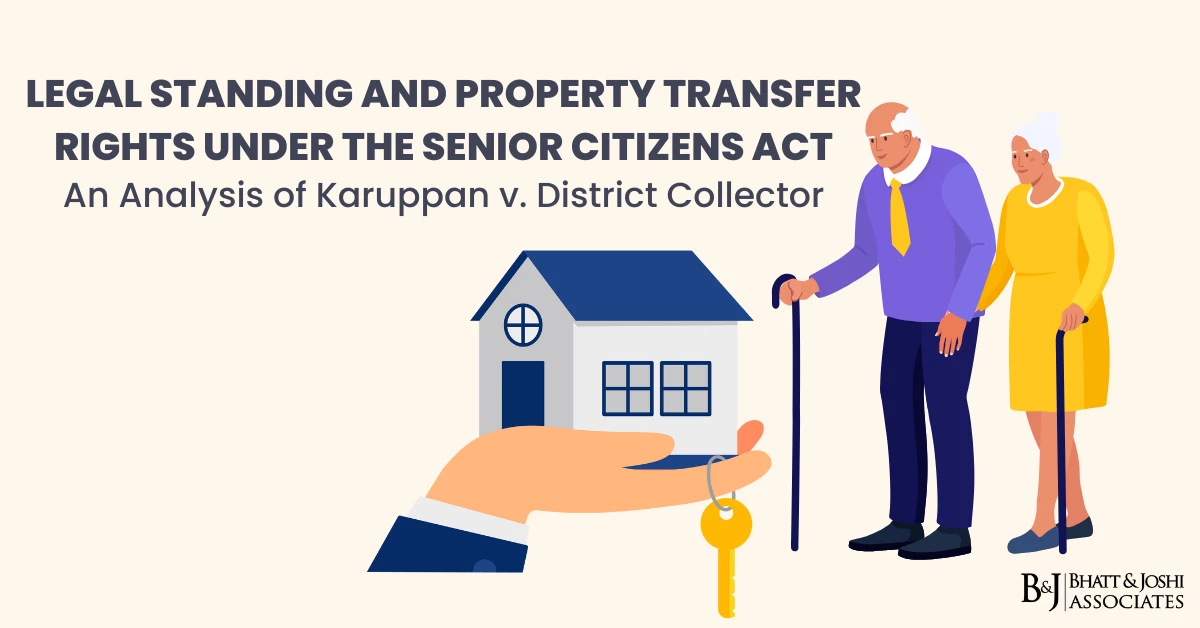INTERFACE BETWEEN ADMIRALTY ACT AND IBC:
Critical Analysis- Raj Shipping Pvt. Ltd. V. Barge Madhva and Anr.

Introduction
Admiralty (Jurisdiction and Settlement of Maritime Claims) Bill, 2016 (hereinafter, The Admiralty), was introduced with the intent to consolidate the existing laws on civil matters of admiralty jurisdiction of courts, admiralty proceedings on maritime claims, and arrest of ships.[1] In simple terms, admiralty proceeding is usually a lawsuit brought against another party over an event that occurred on the high seas, in front of Admiralty court. On the other hand, Insolvency and Bankruptcy Code, 2016 (hereinafter, The IBC), was introduced with the main aim to facilitate a corporate faltering in its debt obligations and to protect the interests of all the stakeholders with equity.[2]
It may appear that there is little chance of a dispute between the two statutes because they cover completely different areas of law with little overlap. That, however, is not the case. The conflict arises when the ship owner is subject to the jurisdiction of both the Admiralty Court as well as the National Company Law Tribunal under the IBC. The vessel is the subject matter under both the proceedings, as an offender under the Admiralty Act and as an asset under the IBC. In such a case, the question arises of jurisdiction where such an issue must go. Similar circumstances have been dealt by Bombay High Court on May 19, 2020, in the case of Raj Shipping Pvt. Ltd. V. Barge Madhva and Anr.[3]
In the Raj Shipping case, the court has passed arrest orders for the owners of the vessels, who were insolvent. This raised two primary questions that had to be dealt by the Bombay High Court-
- Is there a conflict between actions in rem filed under the Admiralty Act and the provisions of the IBC and if so, how is the conflict to be resolved?
- Whether leave under Section 446(1) of the Companies Act is required for the commencement or continuation of an Admiralty Action in rem where a winding up order has been made or the Official Liquidator has been appointed as Provisional Liquidator of the company that owned the vessel?[4]
JUDGMENT ANALYSIS
Doctrine of Harmonious Construction: It is a well-established rule of interpretation that if one construction results in a dispute, but two legislations may be understood harmoniously on another, the latter must be adopted.[5] In case of liquidation of a ship owner, the result would vary based on the nature of the claim, that is to say, the yardstick for a maritime lien in insolvency proceedings is distinct from that of a mere maritime claim.
The maritime lien holder enjoys the advantage of choice when a corporate debtor goes into liquidation, as provided by Section 52 of the IBC. It can choose to either, opt out of the liquidation estate in accordance with Section 52 of the IBC and enforce the security under Admiralty Act [6] or, relinquish the security. Furthermore, an in-rem action against a vessel for the execution of a maritime lien cannot be compared to proceedings against a corporate debtor; hence, the bar under Section 33(5) of the IBC will not apply.
The Court noted that a maritime claim is enforced by an action in rem against the vessel (or its sale proceeds) and thus the vessel is liable to pay the claim. In such proceedings the owner is not a necessary or proper party. This action in rem continues as an action in rem notwithstanding that the owner may have entered appearance, if security is not furnished for release of the vessel. The proceedings against the vessel may commence and continue without the corporate debtor or company even though they may be undergoing winding up proceedings. Thus, the Admiralty Act can be harmoniously interpreted, and no conflict arises with the Insolvency and Bankruptcy Code.
Effect of Moratorium
It was decided by the Court that in the event a moratorium is established under Section 14 of the IBC, then an action in rem, if instituted prior to the declaration of the moratorium, will not be continued during the CIRP, as this would negate the fundamental objective of bankruptcy resolution under the IBC. Furthermore, because the action in rem is not against the corporate debtor, the institution of an action in rem even after the declaration of a moratorium would be permitted, provided that such an action would not be allowed to proceed after the arrest of the ship, so that the resolution process could be effective.
When it comes to the bar imposed by Section 33(5) of the IBC when a ship owner becomes bankrupt, it was determined that such a restriction would not apply because the action in rem is brought against the ship, not the corporate debtor. Whereas, on proceeding with admiralty action, the determination of priorities will be in accordance with the Admiralty Act. The High Court also clarified that the interpretation in the case is only applicable to in rem actions against the vessel and not to in personam action.
Furthermore on the maintenance of the vessel, the obligation to maintain is on Resolution Professional.[7] This involves the responsibility to crew, equip, and maintain the vessel, as well as pay all fees associated with it, such as port fees, bunker fees, and so on. This is in addition to the responsibility of ensuring that the ship does not create a navigational hazard. The Court reiterated that it would be open to the Admiralty Court to consider an application for sale of the vessel at any stage during the CIRP if the above is not being done. In order to safeguard the maker of the payment, the payment will be treated as ‘Sheriff’s Expenses’ in Admiralty and ‘Resolution Process Costs’ under the IBC. The same would be paid out in priority from the sale proceeds of the vessel.
Leave Requirement under Section 446(1)
According to Section 2(1)(e) of the Admiralty Act, admiralty courts have exclusive jurisdiction. As a result, the Company Court was found to lack authority to hear and decide any matter that the High Court with admiralty jurisdiction is authorized to resolve or determine under the Admiralty Act. As a result, no leave under Section 446(1) of the Companies Act, 1956 is necessary. It was also decided that because the Admiralty Act is a special act, it takes precedence over the Companies Act, which is a general act. The Court also held that where a winding up order has been issued or if the Official Liquidator is appointed as Provisional Liquidator of the company that owns the vessel, leave under Section 446(1) is not required for the commencement of an action in rem or continuation of an action against the vessel. Section 529A of the Companies Act and Section 10 of the Admiralty Act do not conflict, and the scheme of priorities under Section 10 of the Admiralty Act takes care of payments due to workmen under Section 529A of the Companies Act.
Conclusion
The Admiralty Act and the IBC have been thoroughly examined and interpreted by the Honorable Bombay High Court. Because the laws were new, there was a lot of overlap and disagreement over their applicability and extent, as well as the jurisdiction of Admiralty courts and insolvency tribunals. The Court has considered the legislature’s aim in enacting the Admiralty Act and the IBC and has attempted to interpret and construct their provisions in a way that is consistent with that goal. As a result, the provisions’ sanctity will be preserved, and the rights of both maritime claimants and corporate debtors will be unaffected.
However, the jurisprudence relating to the connection and interplay of admiralty and insolvency law is far from complete, and certain questions, such as the start of admiralty action in the event of cross-border insolvency, remain unresolved. In an admiralty action, jurisdiction may be exercised regardless of the ship’s or its owners’ nationality, or the owners’ place of business, domicile, or residence, or the location where the cause of action originated in whole or in part.[8] In such a case, the ship owner of a vessel may be incorporated outside of India and may be liable to insolvency procedures in that nation. Because the IBC has not yet adopted the United Nations Commission on International Trade Law Model Law on cross-border bankruptcy, initiating admiralty actions in the event of cross-border insolvency is still a topic that has to be discussed further.
[1] http://164.100.47.194/Loksabha/Debates/Result16.aspx?dbsl=10122
[2] https://www.financialexpress.com/opinion/insolvency-and-bankruptcy-code-why-creditors-panel-must-act-in-best-interest-of-all-stakeholders/914659/
[3] 2020 SCC OnLine Bom 651.
[4] Id.
[5] KSL & Industries Ltd. vs. Arihant Threads Ltd. (2015) 1 SCC 166.
[6] Hero Fincorp Limited vs. Liquidator of Tag Offshore Private Limited, M. A. No. 3656 of 2019 in C. P. No. 54/I&B/2019.
[7] Supra 3.
[8] M.V. Elisabeth and Ors. vs. Harwan Investment and Trading Pvt. Ltd. and Ors., AIR 1993 SC 1014.
Written by-: Harshvardhan Singh Sikarwar











